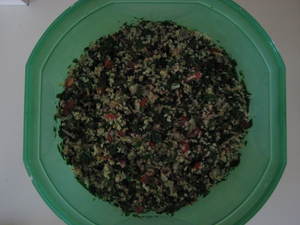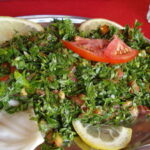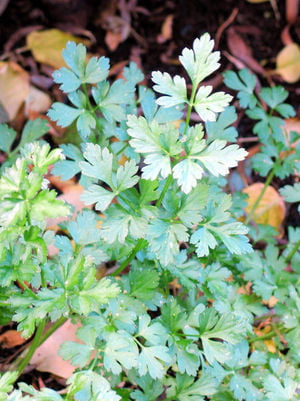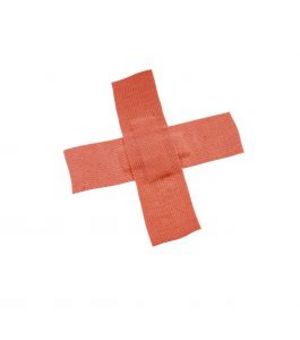What is Tabouleh, you ask? No, it’s not an exotic dance or some foreign blessing. Tabouleh is Mediterranean goodness.
Tabouleh has to be one of the healthiest salads you can eat. It’s a classic Middle East salad with fresh herbs, mainly parsley, mint, bulgur whole wheat, tomatoes, onions and seasonings. It is a great alternative to a regular salad. Unlike a typical salad, Tabouleh will fill you up and you will stay contented for hours. It can also be economical compared to regular salad if you grow your own parsley which can be done even in a large pot.
The Main Ingredients and Health Benefits
Parsley – There are two types of parsley, curly or Italian flat. Many people think of parsley as only a garnish or a few sprinkles of it in a soup or meal. I use a lot of parsley in my cooking. Whenever you put dry herbs with garlic in minced fresh parsley, you will be surprised with the aroma it creates. And the aroma is normally how it will taste in your meal.
I’m not a Middle Eastern expert on how traditional Tabouleh is made. However, I am Italian and that means I’m creative. I’ll always do my own thing, after I try a recipe. Parsley is one of the main ingredients in Tabouleh. Traditional Tabouleh has curly parsley. However, if you want a less strong flavor of parsley, an almost romaine lettuce type flavor, I find using the Italian flat leaf is better for my family’s palate. For children, you might want to slowly get them use to the parsley flavor, however when you start them early, they will be off to a healthy start in life.
When you eat a salad, you need to choose the green leafy type to get more nutrition rather than iceberg lettuce. However, those types of lettuce are a lot more expensive. What is nice about this meal is you can grow your own parsley and save money; rather than purchasing a higher quality lettuce like romaine.
With inflation creeping up, produce is becoming more expensive. So, the consumer needs to find alternatives, and growing your own parsley is not only easy, but you do not need any chemicals for bugs. Apparently, there aren’t any bugs that I have found who like the taste of parsley.
You do not need to be a nutritionist to recognize the health benefits of parsley.
Some of the benefits of parsley are:
Flavonids – Flavonids act as anti-oxidants. They help with conditions like edema, hepatitis, gingivitis, and many more. Regarding gingivitis, did you know that eating parsley takes away your bad breathe, too? You can click “here” for a list of benefits of flavonids.
Volatile or Essential Oils – The volatile oils found in parsley have been demonstrated to inhibit tumors in animals especially in relation to the lungs. I haven’t found any human studies; however, this might be true for humans too.
Vitamin A and C
Vitamin K
Folic acid
Now, again, if you plant your parsley in the ground or a large pot, you will only have had the initial cost of the original plant. In the grocery store, that might be $1.99. However, it reaps far beyond that initial plant. Living here in Florida, my parsley has been growing all year around. However, even with our freezes that we have had recently, it continues to be a hardy herb.
Bulgur Wheat – A box of bulgur wheat costs under $3 for an 18 ounce box. You can find it in your local grocery store. In a typical Tabouleh recipe for 4-6 servings, you use one cup of bulgur wheat. So that means, in one box you can get 2 ¼- 4 ½ meals depending on your servings, which is about .66 per meal if you use 6 servings per meal.
There are many health benefits of bulgur wheat due to it being whole grains:
You get 5 grams of fiber per serving and an assortment of the daily required vitamins, minerals, and antioxidants to maintain a healthy diet.
Bulgur wheat has a nutty and a great chew that fills you up. This result would keep you from snacking afterwards.
Mint – Mint is well known for its ability to sooth the digestive tract and reduces the severity and length of stomach aches.
Onions- The health benefits of onions outweigh the bad breathe; besides, with Tabouleh, the parsley will take care of that problem.
Onions help prevent colds. Onions will also decrease blood pressure and increase antioxidants in the human body.
Tomatoes– Tomatoes are a great source of Vitamin C and antioxidants.
Lemon Juice– Lemon juice is a great ph balance in your body. It will lower the alkaline which is important to your digestion. It is also high in Vitamin C.
Olive Oil – Studies of taking in raw olive oil helps lower heart disease, risk of colon cancer and breast cancer.
What I have listed are the main ingredients of Tabouleh. However, with Tabouleh, I have found you can add many ingredients to it to create a variation.
I would say if you were to grow your own parsley you could feed a family of 6 for one meal of Tabouleh at a cost of under $1.75. Now, if you grew your own tomatoes or onions, it would be even less. So, not only can you be frugal, but give a nutritional mean that sticks with them after their meal is completed.
I leave you with a basic recipe for tabouleh:
1 cup of bulgur wheat (boil 3 cups of water and soak bulgur wheat for one hour, drain thoroughly with a cheese cloth)
2-3 bunches of flat Italian parsley (chopped)
2 sprigs of fresh mint (chopped)
1 small sweet onion (chopped)
1 tomato (chopped; however, you can add more, but if you are watching your cost, then 1 is fine)
1 fresh lemon squeezed
1/3 cup extra virgin olive oil
1 tablespoon of sea salt
1 teaspoon of cracked black pepper to taste.
Mix all the above together. Let it set overnight.
Variations:
Add nuts or beans for protein, dried fruit or substitute the olive oil for dressing. You can also make Tabouleh pockets using pita bread and adding some more tomatoes, cucumbers or whatever your vegetable preference is.








